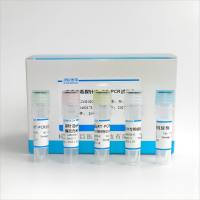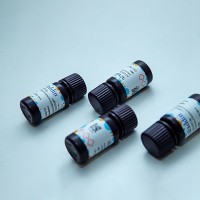Standard RT-PCR
互联网
1260
RT-PCR or reverse transcription PCR refers to PCR that uses product of an RT reaction as template. In effect, the PCR amplifies cDNA fragments. In one-tube RT-PCR, RNA and PCR primers are added to a reaction mix that is thermocycled for RT first followed by for PCR. One-tube RT-PCR reaction mixes are supplied by many manufacturers. Drawbacks to their use include lack of flexibility. Otherwise, RT-PCR is a two step process.
Step I - RT
See Reverse transcription for more on RT
Specificity of RT-PCR can be improved by using gene specific primers for RT.
It is good to include a negative control reaction in the experiment. This is set up like the test reaction, except that RT enzyme is not added to it. Absence of PCR products when using the control reaction as template indicates that the PCR products did not arise from genomic DNA contamination of the RNA sample. If the PCR primers are across introns, then this control is not needed as PCR products arising from any genomic DNA contamination will be of larger size or may even not be obtained (if the introns are large).
Step II - PCR
A fraction, usually 5-20%, of the RT products is directly used in PCR using gene-specific primers.
Notes
Genomic DNA contamination may be irrelavant if it gives rise to PCR products of sizes different than those arising from cDNA. Otherwise, e.g., when primers are designed from same genomic exon, one needs to treat the RNA preparation with DNAse (RNAse-free).
The process of enrichment of mRNA (poly-A+) from total RNA using oligo-dT-affinity also reduces DNA contamination.
One can also add to the RNA sample a combination of restriction enzymes to specifically cleave genomic DNA. Ashkenas et al. (Biotechniques 39:1 2005) suggest making a cocktail of AluI, NlaIII, Sau96I and StyD4I - all frequent cutters - andd adding it to the RT reaction at 1 U ea. enzyme / 20 ul RT reaction. Before RT, the reaction mixture is incubated at 37 deg for 30 min. Then, after RT, the reaction is treated at 94 deg for 10 min to kill the restriction enzymes.









